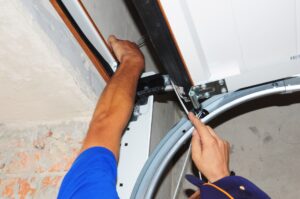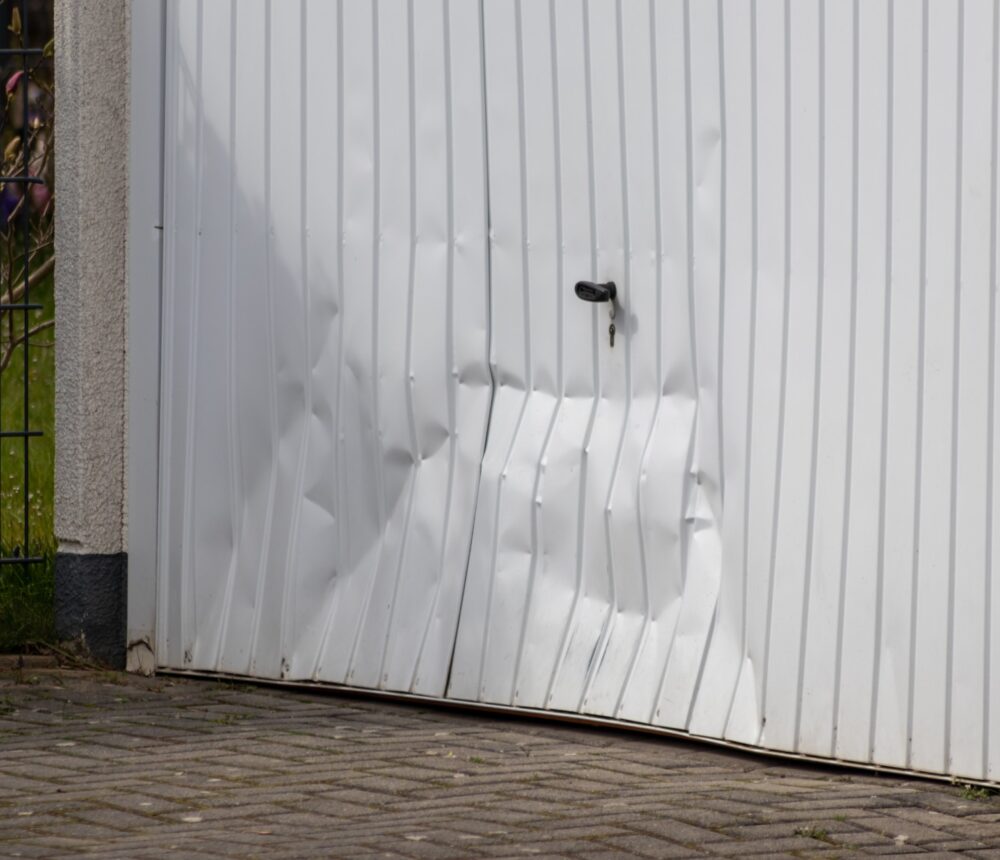A garage door is more than just an entry point to your garage; it plays a vital role in your home’s security, energy efficiency, and aesthetic appeal.
Over time, however, wear and tear can take a toll on the functionality and appearance of your garage door, necessitating replacement.
It’s important to recognise the signs that it may be time to replace your garage door before small problems become bigger issues.
In this blog post, we will explore 10 common signs that your garage door may be in need of replacement, each sign offering insights into underlying issues that may compromise its performance or security.
The decision to replace your garage door is not one to be taken lightly. It represents a significant investment in your property, but when necessary, it’s an investment that can pay dividends in terms of convenience, safety, and peace of mind.
By recognising the symptoms of a failing garage door early on, you can address the issue before it escalates, ensuring that your home remains secure and your garage door operates efficiently.
At Darby Doors, we have seen it all when it comes to garage door replacement.
Excessive Noise
Garage doors naturally produce some noise during operation, but excessive grinding or squeaking noises can be a clear indication that something is amiss. Such noises can result from a lack of lubrication, worn-out parts, or misalignment, all of which can cause damage over time.
This type of noise is more than just a nuisance; it may signal a need for immediate attention to prevent further deterioration.
Ignoring these unusual noises can lead to serious problems in the future.
A thorough inspection by a garage door professional can pinpoint the underlying cause and determine whether repair or replacement is the best course of action.
Replacing a noisy garage door with a newer, quieter model not only improves daily convenience but may also uncover and address hidden safety issues.
Slow Response Time
A garage door that takes a noticeably longer time to open or close can be a sign of a mechanical or electrical problem. Under normal circumstances, a garage door should respond within a couple of seconds after you’ve activated the opener.
Delays might indicate problems with the opener, remote control, or even the door’s physical components. It’s a clear sign that your garage door is not performing as efficiently as it should.
Such a slow response can be a source of frustration, but more importantly, it may signal deeper underlying issues. Whether it’s worn-out gears, a problematic motor, or misaligned tracks, slow operation requires professional investigation.
Prolonging the issue might lead to a complete failure of the door, leaving it stuck open or closed, and potentially necessitating an emergency repair or replacement.
Sagging Sections
Sagging sections in your garage door can be a sign of significant wear and tear.
Over time, parts of the door may start to sag due to weakened materials, lack of proper maintenance, or persistent exposure to harsh weather conditions. If your garage door is uneven or sagging, it can strain the entire system, affecting its operation and safety.
A garage door that is not balanced correctly may eventually fail to open or close properly, creating an inconvenience and a potential security risk. Regular inspection and maintenance can prevent sagging, but once it occurs, it often indicates that the door has reached the end of its functional life.
Replacing the door becomes the most practical solution to restore functionality, improve appearance, and ensure safety.
Increased Energy Bills
An old or damaged garage door can be a significant contributor to increased energy bills, especially during the winter months. Poor insulation and worn-out sealing can allow cold air to enter and warm air to escape, forcing your heating system to work harder. This inefficiency can have a noticeable impact on your energy consumption and, subsequently, your monthly expenses.
Investing in a new garage door with improved insulation can prove to be a cost-effective solution in the long run. Modern garage doors are designed with energy efficiency in mind, utilising materials and construction techniques that provide better thermal insulation.
By replacing an outdated garage door, you are not only enhancing the appearance of your home but also taking a positive step towards reducing your energy costs.
Frequent Repairs
A garage door that requires frequent repairs is a clear sign that it may be time for a replacement. While occasional maintenance and minor repairs are normal, constant breakdowns and the associated costs can add up quickly. This repetitive cycle of repairs may indicate underlying structural problems that are not easily or cost-effectively fixed.
It’s important to weigh the cost of ongoing repairs against the price of a new garage door. In many cases, replacement becomes the more economical choice in the long term. A new door will not only eliminate the need for constant repairs but also provide the benefits of modern technology, improved appearance, and a warranty that offers peace of mind.

Aged Appearance
The appearance of your garage door plays a vital role in the overall curb appeal of your property. An outdated or worn-out door can detract from your home’s visual appeal and even affect its market value. Fading paint, visible dents, and outdated design all point to a door that has seen better days and may be in need of replacement.
Beyond the aesthetic concerns, an old garage door may also lack the safety and functionality features of modern designs. Replacing it with a contemporary model not only enhances the appearance of your home but ensures that you benefit from the latest advancements in security, insulation, and technology. A new garage door can be a transformative upgrade that adds value and appeal to your property.
Difficulty in Operation
Struggling to open or close your garage door is more than just an inconvenience; it’s a sign that something is seriously wrong.
Whether it’s a manual or automatic system, difficulty in operation may stem from problems with the springs, cables, or even the door’s alignment. These issues can make daily use a hassle and pose a safety risk if components were to fail suddenly.
A professional inspection can diagnose the cause of the difficulty in operation, but in some cases, repairs may be only a temporary solution.
If the door is old or the damage is extensive, replacement might be the more practical and safe option. A new garage door will provide smooth, reliable operation and the peace of mind that comes with knowing it’s in optimal condition.
Poor Security Features
In today’s world, security is a paramount concern, and your garage door plays a crucial role in safeguarding your property.
Older garage doors may lack the robust security features found in modern designs, leaving your home vulnerable to break-ins. Outdated locking mechanisms, weak materials, or even gaps caused by wear and tear can be exploited by burglars.
Replacing an old garage door with a modern one equipped with advanced security features can be a wise investment in your home’s safety. Contemporary garage doors offer enhanced locking systems, reinforced materials, and integration with home security systems.
The peace of mind that comes with knowing your property is secure can be well worth the investment in a new garage door.
Damaged Weather Sealant
Weather sealant is essential in protecting your garage and home from the elements. Over time, however, this sealant can become damaged or worn out, leading to leaks, drafts, and potential water damage. Cracked or missing sealant not only compromises the energy efficiency of your garage door but can also allow pests and debris to enter.
Replacing the weather sealant is often a simple fix, but if it’s accompanied by other signs of wear and tear, it may be indicative of a door that’s reaching the end of its lifespan. A new garage door with fresh, effective sealing provides comprehensive protection against weather conditions, ensuring that your garage remains dry, warm, and free from unwanted intrusions.
Unbalanced Doors
An unbalanced garage door is a serious concern that requires immediate attention. A door that appears uneven or feels unstable during operation may have problems with its springs, cables, or other critical components. Left unaddressed, these issues can lead to catastrophic failure, potentially causing injury or damage to your property.
Professional inspection and adjustment can often correct an unbalanced door, but if the problem persists or is part of a broader pattern of wear and tear, replacement may be the best option.
A new garage door ensures that all components are in perfect harmony, providing smooth operation, consistent appearance, and reliable safety. Investing in a new door can eliminate the risks associated with an unbalanced system, offering peace of mind and dependable performance.
Read more: How to choose the right kind of garage door
Conclusion
Your garage door is an essential part of your home, affecting everything from security and energy efficiency to aesthetics and daily convenience. Recognising the signs that it may be time to replace your garage door is vital in maintaining these aspects of your home.
From excessive noise and slow response time to aged appearance and poor security features, these 10 signs provide a comprehensive guide to determining when replacement is the right choice.
Investing in a new garage door is not merely about addressing a single issue; it’s about enhancing your home in multiple ways.
Whether it’s embracing modern technology, improving energy efficiency, boosting curb appeal, or ensuring robust security, a new garage door is a multifaceted upgrade that brings tangible benefits.
If you recognise any of these signs in your own garage door, it may be time to consult a professional and explore the options for a replacement that meets your needs and enhances your home.

